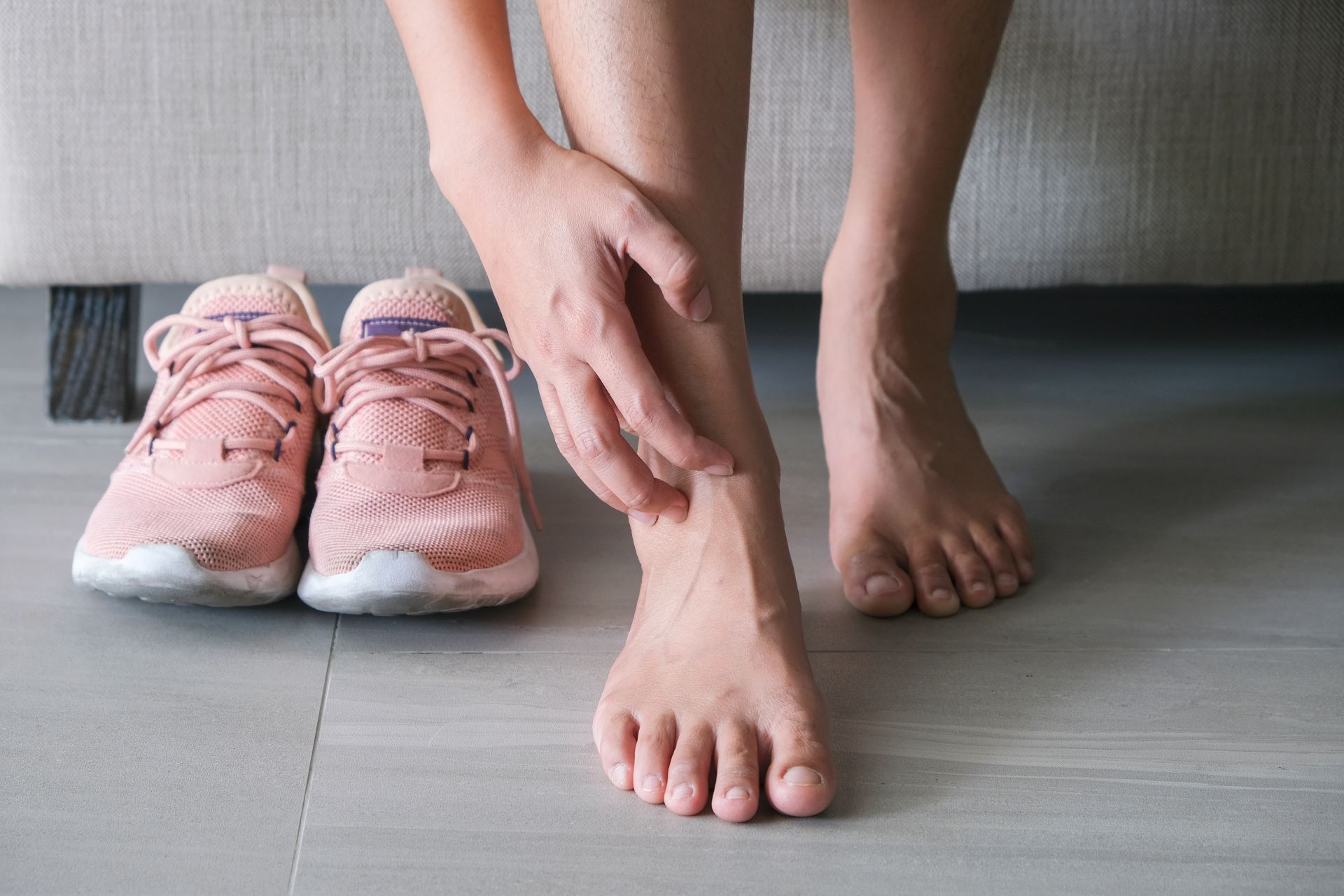Specialist Advice — 15 minutes
What is athlete’s foot?
Contrary to its name, athlete’s foot does not just affect athletes. It is the most common form of dermatophytosis, a skin infection caused by fungi. While athlete’s foot is easy to treat, it should not be taken lightly, as complications can be serious. This is why it is important to get a diagnosis quickly.

Causes
Also called tinea pedis or foot fungus, athlete’s foot is caused by dermatophytes, microscopic fungi that feed on keratin, a component of the skin’s surface layer.
These fungi, which are often found on the skin without causing any problems, can start to proliferate in hot and humid conditions, such as excessive sweating, wearing shoes that are too small, or poor foot hygiene.
Athlete’s foot can also be transmitted from one person to another by contact between bare feet and the floor of a contaminated area (e.g., public pool, sauna, locker room, public showers, etc.) or by sharing contaminated personal belongings such as socks or towels.
Who is at risk of athlete’s foot?
Moisture accumulation between the toes, which promotes the growth of fungi, often occurs in athletes (hence the name “athlete’s foot”), but this fungal infection can appear in many people for a variety of reasons:
- Hereditary vulnerability
- Frequenting damp areas barefoot
- Skin disease, such as eczema
- Foot injuries, such as ingrown toenails
- Weakened immune system
Foot fungus is also more common in the summer, due to the hot and humid weather. In addition, it affects men and teenagers more often than women and older adults.
Symptoms
Athlete’s foot generally appears between the third, fourth and fifth toes, where moisture tends to accumulate. This superficial mycosis is usually unobtrusive at first and causes no discomfort. This is why it is important to regularly check the skin between the toes for signs of an infection, such as redness, moist white skin or slight cracking.
As fungi proliferate, symptoms, such as the all-too-familiar itching, become more prevalent. Other symptoms may include the following:
- Red patches
- Unpleasant odours
- Scaling (peeling skin)
- Blisters
- Thickening of the skin on the soles of the feet
If left untreated, or if the lesions are scratched, the infection can spread to the whole foot and other parts of the body, causing nail fungus, ulcers, cracks or bacterial infections, especially in people with poor circulation in the feet, such as diabetics.
Diagnosis
Athlete’s foot may seem trivial, but it is important to get a diagnosis in order to rule out other possible infections, as there are many other foot diseases. With an accurate diagnosis, affected individuals can obtain the appropriate treatment quickly, avoid complications and take the necessary steps to avoid contaminating others.
During the consultation, the doctor examines the foot and looks for the characteristic signs of athlete’s foot. He or she may also examine the groin, hands and nails for signs of fungal infection in these areas.
If necessary, skin samples can be taken via a quick, painless skin scraping procedure to confirm the presence and type of fungi. While a variety of diagnostic tools are available (e.g., microscopy, histology, dermoscopy, etc.), laboratory testing methods are also employed, such as fungal cultures and molecular analysis.
Molecular analysis is a much faster method. It analyzes the pathogen’s DNA sequence and produces results in less than 7 days. In addition, it can be used to identify mixed infections and agents that do not grow in a culture.
Treatment
If the symptoms are mild, self-treatment can be undertaken by applying an over-the-counter antifungal cream, gel or lotion. However, if this does not work, prescription medication will be required. In fact, a medical consultation is necessary in the following cases:
- Children under 12 years of age
- People with diabetes or a weakened immune system
- Sole of the foot or nail is affected
- Severe symptoms or presence of infection (e.g., inflammation, swelling, pus or severe pain)
- No improvement after two weeks of treatment
- Presence of lesions after six weeks of treatment
The doctor may prescribe antimycotics applied directly to the affected area (topicals) or administered orally, or a combination of both.
Unfortunately, the infection tends to reappear, as despite treatment, the fungus can survive in the cracked skin of the foot. Using an antifungal powder helps keep the feet dry and can prevent a recurrence. If the infection returns after over-the-counter or prescription treatment, it is best to consult a doctor.
Precautions
Since athlete’s foot tends to recur frequently, certain measures can help prevent its spread:
- Wear sandals around public swimming pools, in sports facilities and gymnasiums.
- If your feet sweat excessively, opt for shoes that “breathe.” Wear socks made of natural rather than synthetic fibers and change them as often as necessary.
- Allow damp or wet shoes to dry before wearing them again.
- Dry the skin thoroughly with a towel after a bath or shower, paying particular attention to the spaces between the toes.
- Avoid sharing sports equipment, shoes, socks or towels with others.
We offer services that can help your doctor diagnose foot fungus and related health problems and determine the appropriate treatment.
Do you have a medical prescription for one of these tests? Make an appointment online or call Biron Health Group’s customer service at 1 833 590-2712.










